Safeguard your brand in the UK
Trade Mark Most Asked Questions
Straightforward, fairly priced trade mark registration
Packages & Cost
Our packages for those who wish to protect their brands in the UK.
The Process
To register a trade mark across the entire European Union, the most efficient method is to file a European Union Trade mark (EUTM) application. This application covers all 27 EU Member States. The registration process typically takes about 4-5 months, so long as there are no objections.
The EUTM provides protection in every EU member state. A single similar trademark in any member state can lead to the rejection or cancellation of your application.
If accepted your ™ is registered for 10 years

Trade Mark FAQs
A trade mark enables businesses across the globe to safeguard their image and reputation from both unintentional and deliberate infringement. Trademarking is a crucial tool in ensuring a company can not only sustain its business presence but most importantly, grow. However, much like other areas of law, trade marks are often perceived by the general public as confusing and complex, making them seem inaccessible.
We have compiled a list of the most frequently asked questions about trade marks, from the basics to the more complex. We hope this FAQ section provides the information you need, but if not please do not hesitate to contact us via phone, email or live chat and we will answer any questions you have promptly.
Once you decide to trade mark your brand’s name or logo, there are specific steps to follow. If you do not plan to create and file the application yourself, which can be challenging, you should seek assistance from an attorney or a law firm specialising in trade marks. Our mission at National Business Register is to simplify the trade mark process, making it accessible for every brand to protect its most valuable asset.
Before submitting your trade mark application, it’s helpful to understand potential risks during the registration process. You should be aware of how the respective intellectual property office will evaluate your registration and the similar trade marks already registered in your class, which might file an objection to your application.
Once your application is drafted, you can file it directly with a specific intellectual property office or via WIPO in countries using the Madrid System. The application will undergo an examination period, where the office evaluates the registration. After passing the examination, the application is published for oppositions, during which existing trade mark owners can file objections.
If your application goes through without any objections, you will receive a registration certificate, and your trade mark will be successfully registered. A trade mark is valid for ten years, after which it can be renewed for an additional fee.
No. A trade mark will not be accepted for registration if it is not distinctive enough. However, if this is the case, our report will advise how you can make your trade mark more distinctive and we will help you with your application.
Furthermore, there have been occasions where trade marks that are not distinctive have been accepted for registration if it was proven that the trade mark had acquired a distinctive character because it had been in use for over 5 years. We are on hand to guide you through such cases as these and make the process simple for you.
Trade marks can be registered for various types of marks and distinctive elements that are used to identify and distinguish goods or services in the marketplace. Here are some common types of trade marks that can be registered:
- Word Marks: These are trade marks consisting solely of words, letters, numbers, or a combination thereof. Examples include brand names like “Google” or “Coca-Cola.”
- Design Marks: These trade marks consist of specific designs, logos, symbols, or graphical elements. For instance, the Starbucks mermaid logo or the McDonald’s golden arches.
- Sound Marks: These trade marks are associated with specific sounds or jingles. Examples include the Intel chime or the MGM lion roar.
- Colour Marks: In some cases, a particular colour or combination of colours can serve as a trade mark. For instance, Tiffany & Co. has a registered trade mark for its distinctive blue colour used on jewellery boxes.
- Shape Marks: These trade marks protect the shape or configuration of a product, such as the Coca-Cola bottle or the Toblerone chocolate bar shape.
- Motion Marks: These trade marks involve movement or animation. Examples include the animated logo of DreamWorks Studios or the Pixar lamp sequence.
- Smell Marks: In rare cases, certain unique and distinctive smells may be eligible for trade mark protection, although obtaining registration for smell marks can be challenging.
It’s important to note that the eligibility and registration process for trade marks may vary depending on the jurisdiction and specific requirements of each country’s intellectual property laws.
A trade mark protects various aspects of a brand’s identity, including the brand or product name, logo, slogan, or tagline.
Trade mark protection applies only in the territories where the trade mark is registered. Additionally, according to the Nice classification, your trade mark will fall under one or more of 45 classes of goods and services, depending on the nature of your brand. For example, a clothing brand would choose class 25, which covers clothing, ensuring protection within the clothing industry.
A registered trade mark protects a brand name or logo from infringement by third parties in the countries where it is registered. The standard validity period is ten years, after which the trade mark can be renewed an unlimited number of times.
Protecting against infringement means preventing others from copying the trade mark’s elements or using similar elements that might cause confusion. A registered trade mark signals a single identifiable source of goods or services to customers. In practical terms, it provides the trade mark owner with legal grounds to prevent or stop infringement, including:
Using the ® symbol with the name or logo, signalling to potential copycats that the business owners are prepared to protect their operations and enforce their rights.
Challenging trade mark applicants attempting to register a similar trade mark with the same intellectual property office (raising an opposition).
Reporting infringement on certain platforms, such as Amazon.
Issuing cease and desist letters.
There are two main criteria. The first criterion is distinctiveness – trade marks eligible for registration need to be unique and distinctive enough to allow them to be identified by consumers. They should not be descriptive of the goods or services they offer.
The second main criterion is similarity – eligible trade marks need to display sufficient distinctiveness in comparison to trade marks already registered.
The ® symbol stands for a registered trade mark, indicating that the trade mark has been officially registered with an intellectual property office. In most countries, it can only be used after the registration process is complete.
The ™ symbol is less constrained and can be used freely to signal the intent to register a trade mark. Typically, it is used by entrepreneurs working towards proper legal protection for their business.
Trade marks, patents, and copyrights are all legal instruments to protect intellectual property, but each serves a different purpose.
Trade Marks: Protect a brand’s distinctiveness by safeguarding company or product names, logos, or slogans from infringement. They indicate a single identifiable source of goods or services, tying closely to the concept of a brand.
Copyrights: Protect artistic creations from copying or adaptation. They are well-suited for literary, musical, dramatic, and other creative outputs.
Patents: Protect the technical aspects of new inventions, ensuring that the described functionality and mechanisms cannot be imitated. While trade marks focus on brand distinctiveness, patents are concerned with how a product is made, granting inventors exclusive rights to use their inventions.
By understanding and effectively utilising these legal tools, you can protect your business’s intellectual property and ensure its growth and success. If you have further questions or need assistance with trade mark registration, consult with a specialist at National Business Register. We’re here to help you navigate the complexities of intellectual property protection and safeguard your brand’s future.
Your trade mark does not have to be the same as your business name. Trade mark protection applies to brand names/logos, product names/logos, or slogans. Your company might be registered under one name, but the name of your brand could differ. It’s also possible to own multiple brands under the same company, each with its own trade mark.
You might prefer not to tie the names together if you are still setting up your business and don’t have a business name yet. In that case, you can register the trade mark under your name and transfer the ownership later.
Yes, you can register a trade mark before you start selling your product. Any application should still be made in good faith, and if it is not that may be grounds for cancelling any registered mark.
However, in the US, there is additional proof required, you will have to file on an intent to use basis. After passing the examination, you will have a limited time to prove you have started selling under the trade mark. In other jurisdictions, you may not need to prove commercial use, but depending on the jurisdiction, unused trade marks for a certain length of time can be challenged and potentially cancelled by third parties.
The specific timing and extent of trade mark protection can vary depending on the jurisdiction and individual circumstances.
- EU and UK: Your brand gains some level of protection from the filing date. You gain priority over anyone filing a similar trade mark application after you. If your application is approved, you gain full rights from the date of filing, allowing you to fight infringement that occurred between the filing and registration dates.
- US: You gain priority right after filing, but if your application is approved, the validity of your trade mark starts from the registration date. More importantly, the date of first use in the marketplace is crucial and can date back even before the application filing. While priority based on previous use is harder to prove, a registered trade mark strengthens a business owner’s protection.
Given the complexity of trade mark protection, it’s essential to consult with a trade mark attorney or intellectual property professional to understand the specific requirements and timelines applicable to your jurisdiction.
In most jurisdictions, you don’t have to provide proof of use before filing your trade mark application. The exception is the US, where applicants must submit a specimen proving that goods or services sold under the brand can be purchased/accessed in the US.
The USPTO offers two types of filing bases:
- Use in Commerce: For businesses already commercially active in the US market, requiring a specimen at the time of submission.
- Intent to Use: For businesses planning to launch in the US market. If you file with intent to use, you will need to provide the specimen later, approximately one year after filing.
No, you don’t need to sell your goods/services throughout the entire country.
Generally, the only jurisdiction requiring proof of market activity is the US. Even there, you don’t need to be commercially active in every state; one is sufficient.
Trade marks can apply to brick-and-mortar stores, so you may not sell your products or services nationwide. Even if you offer your products/services locally, your trade mark will be valid nationwide.
You can consider getting a trade mark in those countries where you are currently trading or planning to expand to in the future. Additionally, it is worth considering registering a mark in the country your goods are manufactured in.
It is always a good idea to register your trade mark as soon as possible to prevent anyone from unauthorised usage.
It is not necessary to protect your brand all over the world as this might get quite expensive. You can start with a registration in one country and expand your trade mark to more countries later on. An individual application has to be filed with an IP office of each country where you wish to register your trade mark. You aren’t able to file one worldwide trade mark application.
It is crucial to file your trade mark application as soon as possible. Since your brand is protected from the date of filing, you gain priority over anyone who intends to register an identical or confusingly similar wordmark/logo in a given class/classes within your chosen jurisdiction. Consider filing your initial application in a country where you have the largest customer base and most sales, as the risk of your brand being copied there is highest.
Over time, if funds allow, you can expand your registration to more countries by filing a new application for each jurisdiction. Each application is examined separately by the respective IP office, so issues with one application do not affect the others.
Two basic criteria must be met for a mark to be eligible for trade mark registration: it must be distinctive and not in conflict with any other trade mark.
- Distinctiveness: The mark must be unique enough to be distinguishable from others. Generic terms and descriptive names are not accepted. Many applications fail here, as applicants often overvalue the recognisability of their descriptive brand names (e.g., “5* nails” for nail services or “Trades4U” for trade services).
- Non-Conflict: The mark must avoid or resolve potential similarities with existing trade marks. This prevents consumer confusion and protects brands from potential losses due to that confusion. There is no quick answer to what constitutes similarity, and IP offices use several guidelines to evaluate whether two marks can be considered similar.
If you want to know whether your trade mark is distinctive enough and whether there are any brands that could be considered similar to yours in your country of interest, NBR can undertake a trade mark clearance search for you.
It is not possible to modify a pending or registered trade mark. Once you file your application, you cannot officially add or change any element of the mark. Simple administrative changes, such as the address of the trade mark owner or a transfer of ownership, are possible, but the trade mark itself cannot be modified.
The reason for this is that the approval of an application depends on a rigorous assessment by the IP office, where the examiner evaluates the mark’s distinctiveness and checks for conflicts with previously registered trade marks. Modifying the mark would invalidate this assessment and could potentially bypass rules.
However, all “confusingly similar” versions of your trade mark are protected without needing a second application. If a third party uses a slightly different version of your trade mark, you can still ask them to stop, as it would be considered trade mark infringement. You can also use a slightly different version or variation of your trade mark yourself, but the changes should be minor. For major changes, you should file a new application to fully protect the brand from being copied.
Yes, you can lose a trade mark in several ways.
- Denial of Registration: Your application might be refused by the respective IP office if it does not meet the criteria for successful registration. For example, your mark might be too generic, descriptive, or identical to an existing trade mark. You might be able to appeal the decision in some edge cases.
- Failure to Maintain Registration: If you do not keep your registration active by providing maintenance documents, your trade mark will get an abandoned status. In most jurisdictions, this happens if you fail to renew your trade mark after ten years. In the US, you must also provide supporting documents proving your trade mark is active in the US market between the 5th and 6th years of use.
- Non-Use: If you do not use your trade mark in commerce, a third party can file a petition for cancellation. However, the burden of proof is on them, and they must prove that your trade mark wasn’t used in a given market for a specific period, usually five years.
Generally, trade mark registration is valid for ten years. After that, you can renew your registration for a follow-up fee to avoid losing the protection. The price depends on the country where you hold your trade mark registration, as every IP office has its pricing.
There is one exception in the US. Between the 5th and the 6th year from the date of registration, you have to provide proof that your trade mark is used in commerce, called a Declaration of Use. This statement is submitted together with the specimen/evidence of your trade mark usage in the US market. It can be a picture of your product, a screenshot of your website, an invoice, etc.
After registration, your trade mark will be valid for 10 years (in most jurisdictions). During this time, there is no need to present proof of usage at any level, with only one exception being the United States.
As an owner of a registered trade mark in the US, you will be required to submit a Declaration of Use, proof of use of your trade mark in commerce, between the 5th and 6th year after the registration date. You can do so by filing a Section 8 declaration. If the trade mark is in use, you (or your legal representative) will be asked to provide a statement that the trade mark is in use in commerce, a list of the goods or services in connection with which the trade mark is in use, and a specimen (example of how the trade mark is used). There is a filing fee for submitting the Declaration of Use.
If you are applying for a trade mark in the United States on an intent-to-use basis, there’s a similar procedure where you need to submit a Statement of Use instead. Statement of Use is proof of the trade mark entering commercial use within Year 1 for intent-to-use applications. This is also subject to a fee.
You can prolong the 10-year validity of your trade mark by submitting a request for trade mark renewal with your IP office. You can apply as soon as 6-12 months before expiry, depending on the jurisdiction and you will need to pay the requisite fee.
Trade mark renewal is usually a straightforward process since the mark in question is not assessed again, only prolonged. However, that also means you can’t make changes to your trade mark when renewing it.
Technically, you cannot register an expired trade mark because it is no longer active or enforceable. Once a trade mark registration expires, it cannot be renewed or extended. The expired mark loses its legal protection.
However, in some cases, a previously registered trade mark may become available for registration again if it is not promptly renewed by the original owner or if the owner voluntarily surrenders the rights to the mark. In such situations, the previously expired trade mark may be eligible for a new application by a different applicant.
To determine if a previously expired trade mark is available for registration, conduct a comprehensive search to verify its current status and ensure there are no conflicting marks or pending applications.
Before applying for an expired trade mark, verify whether the trade mark is still used by the previous owner. The owner can revive the mark within six months after expiration. Even after this grace period, the owner might still be using it in commerce under a common law trade mark or might not be aware it has expired. Another reason for expiration could be not responding to an office action issued by the IP office in time, which the previous owner might be able to rectify.
Given the increasing strictness of trade mark examination, consider all these factors before filing a trade mark application for an expired trade mark. It is highly recommended to consult an experienced trade mark attorney.
To buy an existing trade mark, first contact the trade mark owner. Ownership details are public, and you can reach out to the owner after an initial search. Determine if the owner is interested in selling the trade mark. If it is tied to an existing and functioning brand, the likelihood of a sale is relatively low. However, if the owner expresses an interest in selling, you can start negotiating the price and other details of the sale. It is advisable to sign a contract with all transaction details to avoid problems.
This transaction is a legal process, so check with your legal representative to ensure all transaction details are correct.
Finding out your desired trade mark is already taken by someone else can be discouraging, but you still have options.
The problem with the existence of an identical/similar already registered trade mark lies in the owner’s legal right to oppose your application. The intellectual property office can then refuse your registration on the grounds of similarity between the two marks to prevent potential consumer confusion in the market. To minimise the risk of this happening, you can change the mark’s similar element(s) before applying.
If rebranding is not a valid option, you may choose to take the risk and proceed with the application. In general, oppositions are raised in 5% of all cases, and if they do, you can hire a representative to represent you in the opposition proceedings. The outcome is not guaranteed, but some of the steps commonly taken here include the following:
- Limiting the selection of goods and services (which you can also do pre-emptively).
- Signing a co-existence agreement.
- Challenging the opposition.
If you file a trade mark application and discover an identical or confusingly similar name in the same industry, your application might be threatened.
If your application passes the examination process, it is published for opposition. The length of the opposition period depends on the jurisdiction. For example, in the UK, it is two months, in the US, the opposition period is 30 days and in the EU, it is three months; and these periods are usually extendable.
During the opposition period, any holder of a similar or identical mark can oppose your trade mark application based on the likelihood of confusion between the marks. If you receive opposition, you are invited to resolve the issue amicably with the third party (opponent). If this is not possible, the IP office will make a final ruling based on the evidence provided by the third party and your response. It is advisable to hire a legal representative to respond to the opposition on your behalf.
The adjustments needed to make your trade mark registrable depend on why it is not registrable. Here are some common fixes:
- Lack of Distinctiveness: If your brand name is too generic, you might be able to adjust it to become registrable by adding a dominant visual element, such as a logo or an icon, and registering it as a figurative (logo) trade mark. The visual element must add sufficient uniqueness to the brand name. Alternatively, add another word to make your original brand name more unique (e.g., “SugarQueenNadine” instead of just “SugarQueen”).
- Identical Brand Conflict: If there is an identical brand preventing you from registering, consider rebranding.
Generally, you can trade mark a person’s name or a surname, also known as an eponymous brand. However, some conditions must be met before you do so. The question of registering one’s name depends on the jurisdiction where you are planning your registration.
In the UK, there are no special rules to the registration of personal names or surnames. However, it is prohibited to register the names of the members of the UK Royal family. If the name you are planning to apply for is already registered, you might be refused entry to the registry.
In the EU, a trade mark can consist of a personal name and other signs such as letters, numbers, or colours.
In the US, the name you are planning to trade mark must be unique and must be used in commerce, and registering the surname itself would be examined particularly strictly. If you want to register your name simply to hinder anyone else from using it and you don’t have a business it is not possible.
A website can be protected as a wordmark. However, its name must reflect the product it sells or the service it provides. The individual website name must be implemented into something tangible that the customer can buy or use. It is not possible to register just a domain name without that name carrying your brand of products or services.
If you own a domain name, it does not guarantee you the right to claim legal protection for it as a trade mark. The same is true in reverse; if you have registered a trade mark, it does not automatically guarantee you can have it as a domain if someone is using this name for their website.
However, if you have a registered wordmark and the domain owner misuses your name on a website and promotes under your name, it is possible to legally challenge them and enforce your rights.
As long as any term can fulfil the function of a trade mark, it can be registered. This rule applies to common words as well.
Example, “Apple.” Apple is a generic word, and anyone can use it. So, how come Apple Inc. managed to trade mark it?
Since the word “Apple” does not relate to electronics or computers, it can be considered arbitrary in connection to such products. The word “Apple” does not describe any products or services sold by Apple Inc., and that’s why it was easily trade marked. It is considered unique, and thus its registration was allowed.
However, if an apple seller wished to trade mark the word “Apple,” it would not be allowed since that would prevent other produce sellers from using a word that is very common within their niche—an unfair advantage for anyone to have. In this case, “Apple” would have a descriptive character, and registration would be denied.
If you file a trade mark application including a swear word, it will very likely be refused by the IP office. Any vulgarity, profanity, or imagery viewed as racist or offensive is unlikely to be officially trade marked.
In some jurisdictions, there might be an issue with trade mark signs promoting the recreational use of drugs. Moreover, if your trade mark includes shocking or scandalous language, the odds are your application will be refused.
Establishing what can and cannot be trade marked is a bit more complex, as every jurisdiction examines trade marks differently. What is allowed in one jurisdiction might not be allowed in another.
You may apply for a trade mark, but there are high chances that your application will be refused. It might be appropriate to reach out to the owners of the domain and come to an agreement.
However, the niche also comes into play here. If you would like to register a mark “Orange” for beauty products, even though there is already a trade mark “Orange” for electronics, your chances of succeeding are higher.
Why Trade Mark?

What our clients have said
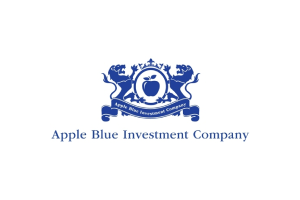


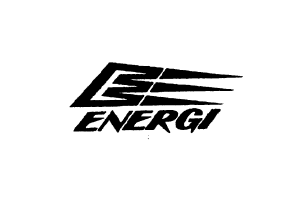
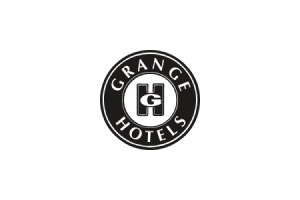
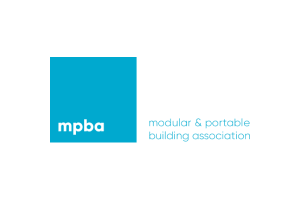

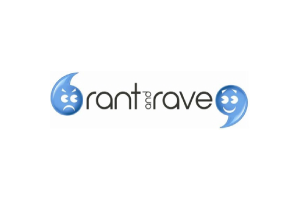
Book your FREE consultation session
Need some advice? Got some burning questions that you want answering?
It only takes two minutes



